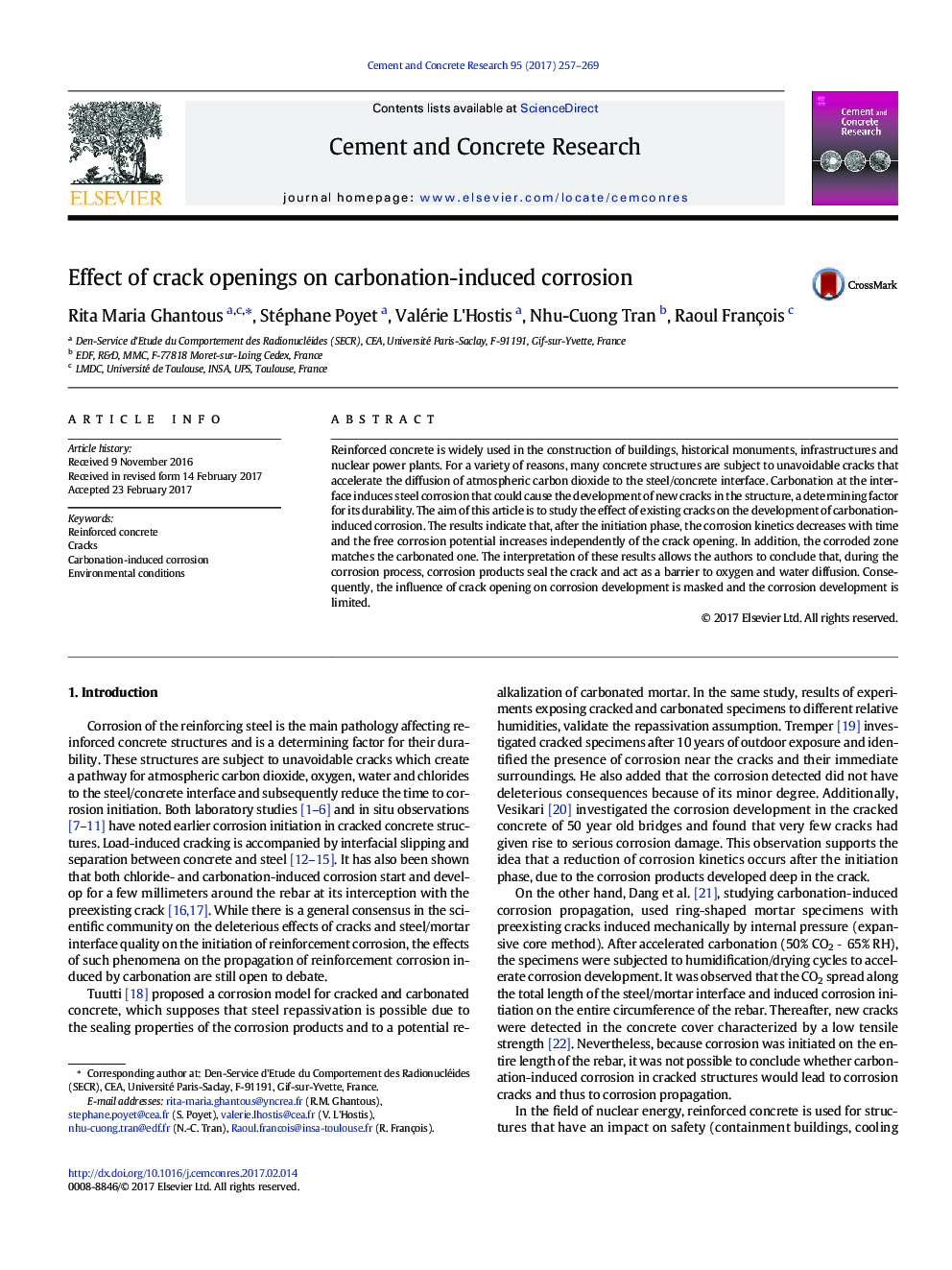| Article ID | Journal | Published Year | Pages | File Type |
|---|---|---|---|---|
| 5437074 | Cement and Concrete Research | 2017 | 13 Pages |
Abstract
Reinforced concrete is widely used in the construction of buildings, historical monuments, infrastructures and nuclear power plants. For a variety of reasons, many concrete structures are subject to unavoidable cracks that accelerate the diffusion of atmospheric carbon dioxide to the steel/concrete interface. Carbonation at the interface induces steel corrosion that could cause the development of new cracks in the structure, a determining factor for its durability. The aim of this article is to study the effect of existing cracks on the development of carbonation-induced corrosion. The results indicate that, after the initiation phase, the corrosion kinetics decreases with time and the free corrosion potential increases independently of the crack opening. In addition, the corroded zone matches the carbonated one. The interpretation of these results allows the authors to conclude that, during the corrosion process, corrosion products seal the crack and act as a barrier to oxygen and water diffusion. Consequently, the influence of crack opening on corrosion development is masked and the corrosion development is limited.
Related Topics
Physical Sciences and Engineering
Engineering
Industrial and Manufacturing Engineering
Authors
Rita Maria Ghantous, Stéphane Poyet, Valérie L'Hostis, Nhu-Cuong Tran, Raoul François,
